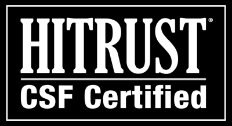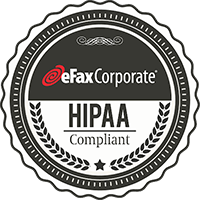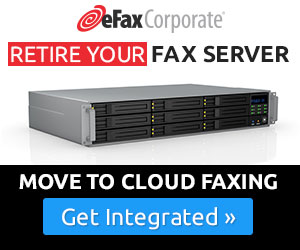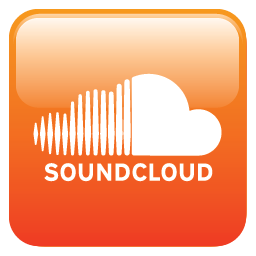3 Things You Need to Know
It’s an oddity of our modern era. In many ways, your educational institution is probably running cutting-edge systems for most of normal operations — fully digitized student records, online platforms for students to access coursework, and WiFi throughout the campus allowing to students to connect and work (or play). These are tools that less than a generation ago would have sounded like science fiction.
And yet, if your school is like most, chances are that in the very same administrative offices across your campus where your employees are running sophisticated digital admin platforms and connecting to the Internet at blazing-fast speeds, they’re also transmitting key documents every day using a technology invented more than 150 years ago.
(For an abbreviated history lesson on the commercial fax machine — starting in 1985, not in 1843 when the technology was actually invented — eFax Corporate has prepared a fun “Fax to the Future” infographic for you.)
Of course, your industry is not alone. Education is only one of many industries that still, well into the second decade of the twenty-first century, operate traditional fax machines right alongside their enterprise-caliber computers, tablets and high-end servers. Healthcare, finance, legal, real estate, consulting, transportation and a host of other industries still do a lot of their communicating and document transmission via old-fashioned, analog faxing.
What Educational Institutions Need to Know About Their Fax Infrastructure
One of the things that sets your institution apart, though, is that as educators you have some unique responsibilities and constraints in terms of how, where and with whom you share many of the most common types of data you transmit — such as students’ education and medical records, disclosure forms and financial information.
And although faxing continues to dominate across schools as the primary transmission technology for many of these documents, it does have some potential drawbacks for educational institutions.
Here are three questions to ask about your fax process to determine if it’s still the right protocol for your sensitive student data and already-busy administrative staff.
1. Is your current fax process secure?
One of the primary problems with traditional desktop fax machines in an institution such as a school (as with a medical office or a law firm) is that incoming paper faxes simply print out on the fax’s tray — where anyone walking by can see them or even grab them by mistake. This is obviously a problem when such faxes contain a student’s family financial background, transcripts, medical records or other sensitive personal information.
Similarly, an outbound fax is also at risk of being viewed or taken by unauthorized personnel if the sender in your administrative offices leaves the fax machine after dialing the number. Even if that fax is transmitted successfully to its recipient, the printed copy of the outbound document can sit unattended on your office’s fax machine indefinitely.
This of course raises all sorts of questions about student privacy and the security of their data. You certainly put more security controls on the student data you are protecting in your databases, and you probably have guidelines instructing your staff, for example, not to leave digital copies of student records lying around the office on an unencrypted flash drive.
2. Is your current fax process FERPA compliant?
Another reason educational institutions like yours are advised to take a thorough, critical look at their faxing infrastructure is that schools are legally obligated to take specific steps regarding how they protect student data — under the federal Family Educational Rights and Privacy Act, or FERPA.
Although the law went into effect more than 40 years ago, FERPA has undergone many changes and additions to reflect the significant new technologies that have entered widespread use since its passage in 1974. That makes sense, when you consider that email, the Internet, text messaging and many other forms of communicating and sharing information hadn’t hit the scene until decades after FERPA’s passage. Ironically in fact, one of the few protocols that hasn’t changed much since FERPA was written is the analog fax machine!
What all of this means for you and your organization is that you need to be sure that the way you are transmitting student information by fax complies with the complicated language of FERPA — including the new guidance on the law just released in 2014.
The key question you need answered, then, is whether your educational institution’s paper-based faxing processes meet the rules and guidelines covered under FERPA for safeguarding your students’ data privacy and security.
3. Is your current fax process the most efficient, productive way to fax?
Let’s say that your existing fax infrastructure does meet your institution’s threshold for both student data security and regulatory compliance when it comes to transmitting your students’ personally identifiable information. (Although if you’re using desktop fax machines, we’ll make an, ahem, educated guess that you’ve still got work to do both in terms of security and compliance.)
What about staff productivity? What about cost-effectiveness? Does your legacy, paper-based fax infrastructure represent the best solution for your institution now or going forward?
Again, we’ll assert no.
That’s because traditional analog faxing has many cost and productivity drawbacks for any organization — and schools are no exception.

The productivity downside to traditional faxing.
Let’s start with the productivity problems inherent in a legacy faxing system. With your desktop fax infrastructure, your staff cannot send or receive important, time-sensitive faxes on the go. Unlike the email or online file sharing they probably do on a regular basis, your employees can fax only if they’re physically in front of one of your school’s fax machines.
What’s more, sending documents by fax often means several time-consuming steps rarely necessary anymore in much of the rest of your staff’s daily workflows — printing or copying documents, standing at a fax machine, filing the paper copies (securely, of course) after sending, redialing busy fax numbers, waiting for the delivery confirmation, and sometimes waiting in line for access to the fax machine.
And finally, when it comes to distributed and decentralized fax machines spread across your campus, there’s the question of usage monitoring, record-keeping and detailed audit trails. With a series of standalone machines, each with its own dedicated fax phone line, your IT team will have real difficulty in keeping track of your school’s overall fax usage, and you’ll have no way of digitally tracking and storing records of all inbound and outbound faxes. This could prove problematic in the event your institution needs those comprehensive records for audit or regulatory reasons.
The cost downside of traditional faxing.
Desktop fax machines are also expensive, requiring paper, ink, maintenance, repairs and upgrades — not to mention the high monthly costs of maintaining dedicated analog phone lines to power their fax transmissions.
Cloud Faxing: The Smart Solution for Educational Institutions
There is a single solution that can address all of these issues with your legacy fax system — its inherent gaps in student data security, its potential areas of noncompliance with FERPA’s strict guidelines, and the productivity and cost-effectiveness drawbacks of paper-based faxing. That solution is online cloud faxing.
Cloud faxing is a solution proven to improve the faxing process for business and other organizations — including schools and universities — by enabling employees to send and receive faxes securely by email online from any desktop, tablet or smartphone.
Internet faxing eliminates the need for organizations to maintain, troubleshoot and upgrade their legacy fax hardware, while also allowing them to stop paying high monthly costs for their dedicated fax phone lines.
At the same time, online faxing greatly enhances the security and privacy of fax documents, by transmitting those documents with advanced encryption, via email, and forwarding them directly and only to the authorized recipient’s email inbox — as opposed to simply leaving them sitting on an office fax machine.
Cloud faxing also enables organizations’ IT departments and other designated administrators to easily track, monitor and manage all fax usage organization-wide — ideal for record keeping and staying on the right side of regulators.
For Cloud Faxing, You Can Trust Industry Leader eFax Corporate
When it comes to entrusting your students’ personally identifiable information and other sensitive school data to a cloud fax solution, you should trust only the world leader. For 20 years, that has been the same provider — eFax Corporate.
Trusted by more heavily regulated organizations than any other cloud fax provider, eFax Corporate is also the choice for most of the Fortune 500 and thousands of other midsized to large businesses.
Our cloud fax services can help your educational institution tighten up your fax security, meet FERPA compliance requirements, and improve your overall fax productivity.
Learn more about how eFax Corporate can help your school.











